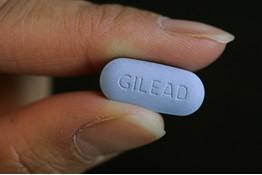Other Articles
- Mestex Covid-19 Notice
- Mestex Covid-19 Update
- Video Introduction of the New Aztec AMC Evaporative Cooling Air Turnover System
- Designing Data Centers as Thermos Bottles
- A New Video on YouTube Describing How the Aztec Evap System Works
- SHOWTIME!!!
- Aztec To Be In Capacity North America Exhibit Hall
- Virtual Reality
- A Simple Concept That Saves Big Dollars
- Indirect Evaporative Cooling Research Project Launched
- Canadian Patent Granted for Mestex Digital High Turndown Burner
- So You Think Your Critical HVAC System Is Reliable?
- Aztec Provides Fresh Air Intake Penthouses for Data Centers in Northwestern US
- Shading and Make-Up for Building Designers
- Credibility and Trust
- How I Spent My Summer Vacation
- Too Hot to Handle? A Simple Reminder.
- Preaching to the Choir
- Evaporative Cooling Anaysis for Data Modules in Two Diverse Climates
- Aztec Indirect Evaporative Cooling System on Display at DFW ASHRAE Golf Outing
- How We Used To Do It
- Air Pollution and HVAC
- Aztec Evaporative Cooling for Data Centers at Data Center World
- Mestex, Division of Mestek YouTube Channel
- GreenBuild Toronto
- Trane Division of Ingersoll-Rand in Lawsuit Over Wireless Technologies
- New BIM Objects From The Aztec Brand
- DOE Proposes Building Rating System
- The Importance of Correct Static Pressure for Direct Fired Make-Up Air Equipment
- Instant Online Document Lookup Using Microsoft Tags
- Do Evaporative Cooling Systems Use Too Much Water?
- Sustainability at Mestek Dallas
- Facebook Offers Their Outside Air Cooling Solution To All Data Center Owners
- Restaurant Energy Saving Idea That Can Be Used Anywhere
- Planning for Volatility
- Ever Wonder Where the Power Goes in a Data Center?
- ASHRAE TC 9.9 Expands Data Center Temperature Ranges Again
- Green Buildings Get Another Boost
- ASHRAE Show Report
- The Story of SHR or Why My Classroom is Stuffy
- It is not sustainable if it is not maintainable... or if it breaks down
- Accounting Rule Change Might Impact HVAC
- Reduce electrical demand load with an Aztec indirect evaporative cooling unit
- Lower Cost of Ownership with the Applied Air FAP
- Everything You Want to Know in a Flash
- Data Centers and Evaporative Cooling Webinar August 23
- New "Green" Product Announcement
- DDC Application Case Studies
- PowerPoint showing the importance of gas pressure, static pressure, and voltage
- Webinar: 'The Importance of Correct Gas Pressure, E.S.P. and Voltage'
- An Old Solution to a New Problem
CFD, Air Turnover, and the Pharmaceutical Industry

The pharmaceutical business is a multi-billion dollar global industry. Each pill or powder that is produced costs tens of millions dollars to develop and that makes each pill a valuable commodity. Imagine the value of an entire 25,000 sq.ft. warehouse full of those pills.
In order to become more efficient in the design, prototyping, production, and distribution of these high-value pharmaceuticals the industry has adopted the use of CFD (Computational Fluid Dynamics) throughout the process. An article in Pharmaceutical Technology magazine in 2002 showed just how extensive the use of CFD is in the industry (http://www.stress.com/pdf/med/CFD_pharma.pdf). A 2010 article on the Revit Community website illustrated how CFD was used to create the proper storage environment for drugs once they were in distribution (http://revitcommunity.com/feature_full.php?cpfeatureid=49586).
For its part, when a leading pharmaceutical company needed to provide very tight temperature control in their southern California warehouse containing $6 million dollars worth of expensive pills Applied Air performed a number of CFD analyses in order to optimize the performance of the proposed system. The installing contractor, Pacific Rim Mechanical, not only saved hundreds of hours of field labor by using an Applied Air air turnover system but they were able to provide their customer with temperatures throughout the warehouse that did not deviate by more than 2 degrees from wall to wall and floor to ceiling. This was critical for the shelf life of the drugs and the drug maker has an elaborate temperature and humidity monitoring system in the building with over 40 points set to alarm if conditions drift out of the acceptable range. No alarms have been triggered in over 12 months of operation.
